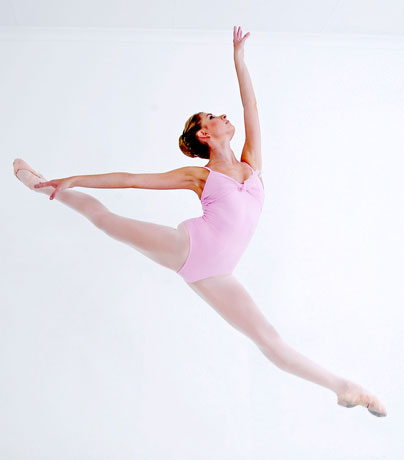Jumps & Turns

Dance technique can be found in every style of dance, whether it’s ballet, tap, jazz, contemporary or hip hop. Jump and Turns Class puts the emphasis on technique by working to improve pirouettes, leaps, turn sequences and more! Below are some tricks and tips that enrich overall technique and strength.
Repetition: Dance classes are planned around repetition, utilizing combinations and pathways in the dancer’s body to create the proper application of muscle memory. Per Merriam Webster, muscle memory is the ability to repeat a bodily movement exactly. This is a vital part of learning to dance with a strong and safe technique. Creating the wrong pathways leads to poor muscle memory, injury and subsequently, bad technique.
Pirouettes: Finding the correct position for your pirouette in releve balance requires a strong core and body alignment. Balances in passé, parallel passé, and coupe are the most common positions to work on for pirouettes. Planks, Pilates Abs and Crunches before working on balances in Leaps and Turns Class activates the core muscles and prepares the dancer for optimal technique. Add in flat backs and V-sits to engage the back muscles as a bonus. Dancers must keep the spine in line and straight, core pressed in, and a strong passé/coupe position while practicing balances. Pressing down through the shoulders, rounded arms in 1st and your highest releve are key to proper pirouette position.
Balon: Balon is the ballet terminology for gaining height in leaps. The name was inspired by French ballet danseur Claude Balon, who was known for performing exceptionally light leaps. When working on ballon, it is important to engage through the core, tighten the rear and press down through the shoulders. Often, breath in as you leap can make a big difference. Whether it’s a leap of a jump, you want to make sure your plie pushes through the floor with your toes being the last thing to push off the floor and the first thing to land as you roll through the landing into plie.
Dance technique is constantly changing and growing, pushing dancers to their limits. The most important thing is to make sure your instructor is pushing you in all the right ways to not help grow your strength and technique, to be the best dancer you can be.
